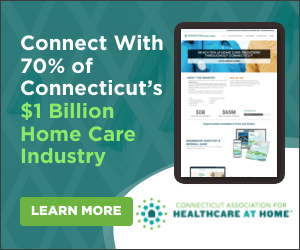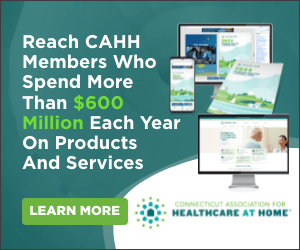 |
||||||||||||||||||
| December 21, 2023 | ||||||||||||||||||
Source: NHPCO, Dec. 13, 2023
The 2023 Facts and Figures report is now available on the NHPCO website. Facts and Figures is an essential annual report on key data points related to the delivery of hospice care, including information on patient characteristics, location and level of care, Medicare hospice spending, and hospice providers. This year’s findings reflect patients who received care through 2021 provided by hospices certified by the Centers for Medicare and Medicaid Services (CMS) and reimbursed under the Medicare Hospice Benefit. Read the full press release.
Source: McKnights Home Care, Dec. 4, 2023
Providers and their caregivers need to take actions to protect themselves against workplace violence, a group of experts said in a webinar sponsored by the National Association for Home Care & Hospice.
“We may not be able to 100% prevent violence for safety concerns in the home setting,” Candyce Slusher, owner of senior care consulting firm Slusher Consulting, said during the Wednesday webinar. “So we’ll do what we can to recognize those things ahead of time and try to protect our staff, but they also need to know how to protect themselves and feel comfortable coming to you when there’s issues.”
Source: McKnights Home Care, Dec. 12, 2023
The Medicare Payment Advisory Commission offered initial recommendations for Congress to cut home health reimbursement by 7% and pause hospice payment updates in 2025.
“The 2022 [home health] margins remain above 20%, higher than the long-run average of 16.8% since 2001,” Evan Christman, senior analyst at MedPAC, said during last Friday’s public meeting, according to a transcript. “Overall, these margins indicate that Medicare fee-for-service continues to pay well in excess of cost.”
Part of the reason home health agencies reportedly saw margins of 22.2%, on average, according to Christman, is a decline in the number of visits per 30-day period. Since the implementation of the Patient-Driven Groupings Model in 2020, these visits have declined more than 15%; between 2021 and 2022, visits per 30 days declined 3.5%.
Source: Home Health Care News, Dec. 15, 2023
Artificial Intelligence seems to be on the tip of most health care leaders’ tongues heading into 2024—and the topic is certainly finding its way into home care conversations too.
In fact, many home care leaders are already exploring how to incorporate AI into their organizations, getting the best use out of emerging solutions.
“I think there’s both reward and risk there,” Home Helpers President and CEO Emma Dickison said during a recent Home Health Care News webinar. “There’s all kinds of AI that I think can support the home care model.”
Just a few possible uses of AI in home care include improved home-monitoring technology, virtual assistants, and marketing solutions, according to Dickison, whose company delivers in-home care services to seniors across a franchise network of more than 300 locations.
Source: NAHC, Dec. 18, 2023
On Dec. 12, 2023, the Centers for Medicare and Medicaid Services (CMS) released an informational bulletin on the development of Direct Care Worker Registries. Although CMS’ guidance does not include any new policy, it reminds states of the ability to develop these registries and use them as tools to support workforce retention, recruitment, and credentialing. Some of the potential registry functions that CMS’ guidance proposes include:
Notably, CMS’ guidance stresses that these registries can be used both for connecting workers and participants with provider agencies and for supporting self-directed home and community-based services (HCBS). CMS also discusses the availability of increased federal match, potentially up to 90%, for the development of and installation of worker registries and 75% for ongoing maintenance and operations. States may also use any remaining unallocated American Rescue Plan Act (ARPA) HCBS funding to develop these systems.
The bulletin is available at: https://www.medicaid.gov/sites/default/files/2023-12/cib12122023_0.pdf.
Source: NAHC, Dec. 19, 2023
The Participation Exemption for Size Form for the calendar year (CY) 2023 CAHPS Hospice Survey data collection and reporting requirements must be completed and submitted by Dec. 31, 2023. Hospices that served fewer than 50 survey-eligible decedents/caregivers from Jan. 1, 2022 through Dec. 31, 2022 [or from assignment of CCN]) can apply for an exemption from participation in the CAHPS Hospice Survey for CY 2023.
Hospices meeting this criterion that do not submit a Participation Exemption for Size form and do not participate in the CAHPS Hospice Survey in CY 2023 are subject to the 4% annual payment update penalty. Please note, exemptions on the basis of size are active for one year only. Hospices submitting an exemption for CY2022 must also submit an exemption for CY2023 if they have continue to meet the size criteria.
If a hospice continues to meet the eligibility requirements for this exemption in subsequent years, the organization will need to again request the exemption.
By Courtney Verissimo, Director of Membership and Education
One of the responsibilities of CAHH is to make members aware of services and tools that have the potential to impact your businesses in a positive way. In light of Joyce's death, I recently connected with Katana Safety (the premier provider of lone and workforce safety solutions for our industry) to inquire about their efforts to help protect home health workers. Katana Safety was started by Todd Baldree, when he learned that one-in-four women are sexually assaulted in college. Originally designed as a solution to help keep his college-bound daughter and others safe on campus, Katana Safety has evolved to become the nation's leading provider of personal safety solutions for home health, hospice and home care workers, as well as the social services industry.
The 2024 Leadership Summit for Home Health and Hospice is just weeks away. Both the conference and the evening’s intriguing mystery dinner are being held at the exquisitely appointed Colonnade Hotel in Boston. Register today and secure your spot at the early-bird rate.
What’s in store for this year’s event?
|
||||||||||||||||||
| Past Issues | Subscribe | cthealthcareathome.org | Advertise with Us | ||||||||||||||||||







